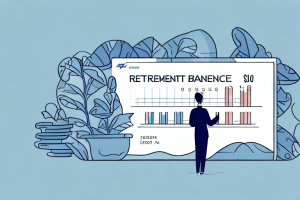Retiring with no savings may seem like a daunting challenge, but with careful planning and commitment, it is possible to achieve financial security and retire comfortably in just five years. In this article, we will explore various strategies and tips to help you navigate this unique retirement journey.
Introduction: The challenge of retiring with no savings
Retiring without any savings poses a considerable challenge, as the majority of people rely on retirement funds accumulated over several years of working. However, with the right mindset and some creative thinking, it is possible to overcome this obstacle and secure a comfortable retirement.
One strategy for retiring with no savings is to focus on reducing expenses and living a frugal lifestyle. By cutting back on unnecessary expenses and finding ways to save money, individuals can stretch their limited resources and make them last longer. This may involve downsizing to a smaller home, finding cheaper alternatives for everyday expenses, and prioritizing needs over wants.
Setting realistic retirement goals without savings
When planning to retire with no savings, it becomes even more crucial to establish realistic retirement goals. Start by assessing your desired lifestyle during retirement and consider factors such as housing, healthcare, and leisure activities. Prioritizing your goals will allow you to focus on what truly matters and develop a personalized retirement plan.
One important aspect to consider when setting retirement goals without savings is the potential need for additional sources of income. While savings may not be available, exploring options such as part-time work, freelancing, or starting a small business can provide a steady stream of income during retirement. It is essential to research and understand the feasibility of these options and how they align with your desired lifestyle and goals.
Another factor to consider when planning for retirement without savings is the importance of building a strong support network. This network can include family, friends, and community resources that can provide assistance and support during retirement. By establishing connections and relationships, you can tap into resources that can help you navigate financial challenges and find creative solutions to meet your retirement goals.
Assessing your current financial situation
Before embarking on your journey to retire in five years with no savings, it is essential to assess your current financial situation. Take an in-depth look at your income, expenses, debts, and assets. This evaluation will provide a clear understanding of your financial starting point and help identify areas for improvement.
Start by examining your income sources. Calculate your monthly income from your job, investments, rental properties, or any other sources. Consider any fluctuations or uncertainties in your income, such as commission-based earnings or freelance work. Understanding your income will help you determine how much you can allocate towards savings and retirement planning.
Next, analyze your expenses. Create a detailed budget that includes all your monthly expenses, such as housing, utilities, transportation, groceries, and entertainment. Identify any unnecessary or excessive spending habits that can be reduced or eliminated. This exercise will give you a clear picture of where your money is going and where you can make adjustments to increase your savings.
Creating a budget to maximize savings and reduce expenses
A well-designed budget is a crucial tool for maximizing savings and reducing expenses. Analyze your spending habits and identify areas where you can make substantial cuts. Prioritize needs over wants and seek out creative ways to save money. By diligently adhering to your budget, you can generate significant savings over time.
One effective strategy for reducing expenses is to negotiate with service providers. Whether it’s your internet, cable, or phone bill, many companies are willing to offer discounts or lower rates if you simply ask. Take the time to research competitors’ prices and use that information as leverage when negotiating with your current provider. Additionally, consider bundling services or opting for lower-tier packages to further reduce costs. Remember, every dollar saved adds up and contributes to your overall financial goals.
Generating additional income streams to accelerate retirement savings
When retiring with no savings, it becomes imperative to explore additional income streams. Consider taking on part-time work, freelance opportunities, or monetizing a hobby or skill. Having multiple sources of income will help accelerate your retirement savings and bring you closer to achieving your goals.
One option for generating additional income is to invest in rental properties. By purchasing a property and renting it out, you can earn a steady stream of rental income that can contribute to your retirement savings. Additionally, if the property appreciates in value over time, you may also benefit from capital gains when you eventually sell it.
Another way to generate extra income is to start a small business. Whether it’s an online store, a consulting service, or a local shop, running your own business can provide you with a flexible source of income that you can continue to manage even after retirement. It’s important to choose a business that aligns with your skills and interests to increase your chances of success.
Exploring alternative retirement options for those with no savings
Retirement doesn’t always have to mean traditional approaches like a beachfront villa or a golf course. Explore alternative retirement options that align with your budget and interests. Co-housing communities, tiny houses, or even retirement abroad can offer affordable and fulfilling retirement experiences.
One alternative retirement option to consider is co-housing communities. These communities are designed for individuals who want to live in a close-knit community and share resources and responsibilities. Co-housing can provide a sense of belonging and support, as well as cost savings through shared expenses.
Investing strategies for fast-tracking retirement with limited funds
While traditional investments may require significant capital, there are alternative investment strategies suited for those with limited funds. Consider investing in low-cost index funds, peer-to-peer lending, or real estate crowdfunding platforms. Thorough research and wise investment choices can fast-track your retirement plans.
Another option to consider is investing in dividend stocks. Dividend stocks are shares of companies that regularly distribute a portion of their profits to shareholders in the form of dividends. By investing in dividend stocks, you can potentially earn a steady stream of income that can be reinvested to grow your retirement savings. It is important to carefully research and select dividend stocks from stable and reputable companies to minimize risk and maximize returns.
Maximizing government benefits and social security options for early retirement
Government benefits and social security options can be a valuable source of income during retirement. Familiarize yourself with the eligibility criteria and optimize these benefits to supplement your retirement income. Consulting with a financial advisor can help you navigate this complex process efficiently.
One important aspect to consider when maximizing government benefits and social security options for early retirement is understanding the impact of claiming benefits at different ages. While you can start receiving social security benefits as early as age 62, your monthly benefit amount will be reduced compared to if you wait until your full retirement age. On the other hand, if you delay claiming benefits beyond your full retirement age, your monthly benefit amount will increase. It’s crucial to weigh the pros and cons of claiming benefits early versus waiting, taking into account your individual financial situation and long-term retirement goals.
Utilizing tax advantages and incentives to boost retirement savings
Understanding tax advantages and incentives is crucial when striving to retire with no savings. Explore retirement-specific tax-advantaged accounts like Individual Retirement Accounts (IRAs) and study tax codes to discover deductions and credits available to retirees. Utilizing these opportunities can significantly boost your retirement savings.
Navigating the real estate market for affordable housing options in retirement
Housing is often one of the most significant expenses in retirement. Research affordable housing options in your area or consider downsizing to a smaller, more affordable home. Additionally, exploring rent-to-own or house-sharing arrangements can provide alternative solutions to housing costs.
Downsizing and decluttering to minimize expenses and simplify retirement living
Downsizing and decluttering play a vital role in achieving a simpler and more cost-effective retirement. Rid yourself of unnecessary possessions and consider selling or donating them. Not only will this help reduce expenses, but it will also create a more streamlined and stress-free living environment.
Planning for healthcare costs and insurance coverage in the absence of savings
Healthcare costs can pose a significant financial burden during retirement. Research and compare healthcare plans to ensure that you have adequate coverage for your needs. Additionally, explore options like health savings accounts (HSAs) to mitigate healthcare expenses and plan for unexpected medical costs.
Implementing a disciplined saving and investment strategy for expedited retirement planning
Retiring in five years with no savings requires a disciplined approach to saving and investing. Automate your savings by setting up regular contributions to retirement accounts. Consider adopting a frugal lifestyle to maximize savings. It may also be beneficial to consult a financial planner to develop a comprehensive investment strategy.
Tapping into entrepreneurship and starting a small business as a retirement plan
Entrepreneurship can be a viable path to retirement without savings. Assess your skills and interests and explore the potential for starting a small business. This endeavor can provide income, flexibility, and a fulfilling retirement venture tailored to your unique strengths and passions.
Exploring unique strategies like house hacking or van life to retire without savings
Embracing unconventional strategies can offer exciting alternatives to retiring without savings. House hacking, where you rent part of your home to others, can generate additional income and reduce housing costs. Alternatively, van life or converting a campervan into a home-on-wheels can provide flexibility and significantly lower living expenses.
The importance of financial literacy and educating oneself about personal finance
Financial literacy is essential for successfully navigating the path to retirement with no savings. Educate yourself about personal finance, retirement planning, and investment strategies. Empower yourself with knowledge to make informed decisions that will positively impact your retirement journey.
Overcoming obstacles and staying motivated on the journey to retiring with no savings
Retiring with no savings requires perseverance and resilience, as there may be obstacles along the way. Stay motivated by regularly reviewing your progress and celebrating small milestones. Surround yourself with a supportive community or seek out individuals who have successfully retired without savings for inspiration and guidance.
Case studies: Real-life stories of individuals who achieved early retirement without savings
Real-life case studies can provide valuable insights and inspiration for those looking to retire with no savings. Explore success stories of individuals who successfully navigated this unique retirement path. These stories can offer practical tips, strategies, and a glimpse into what is possible when determination and planning align.
Conclusion: Empowering yourself to retire in 5 years with no savings
Retiring with no savings is indeed a challenge, but with careful planning, determination, and the right strategies, it is possible to achieve financial security and retire comfortably in just five years. Review the various approaches shared in this article, adapt them to your unique circumstances, and take the necessary steps towards your dream retirement. Remember that you have the power to shape your financial future and create the retirement you desire.



